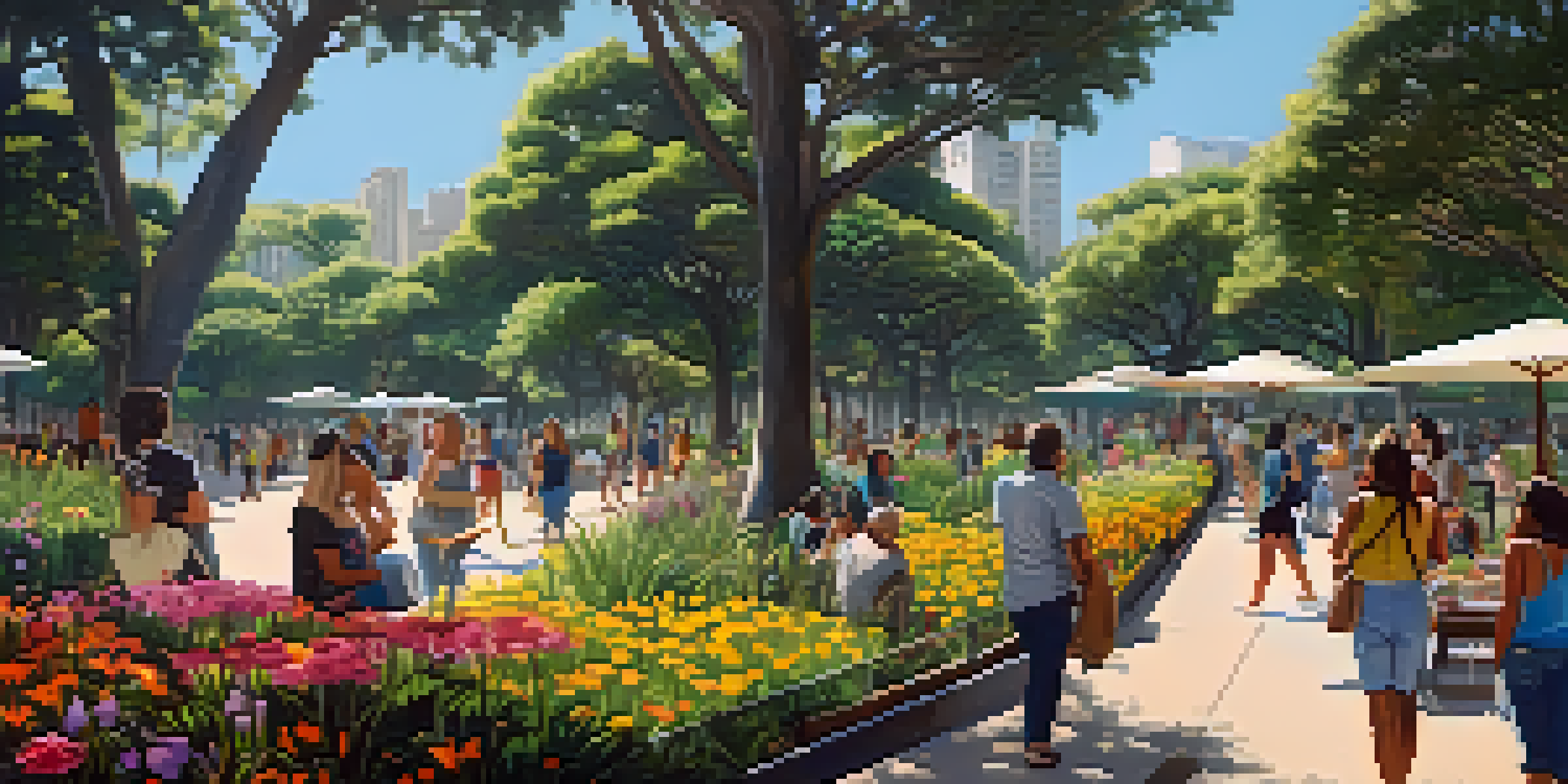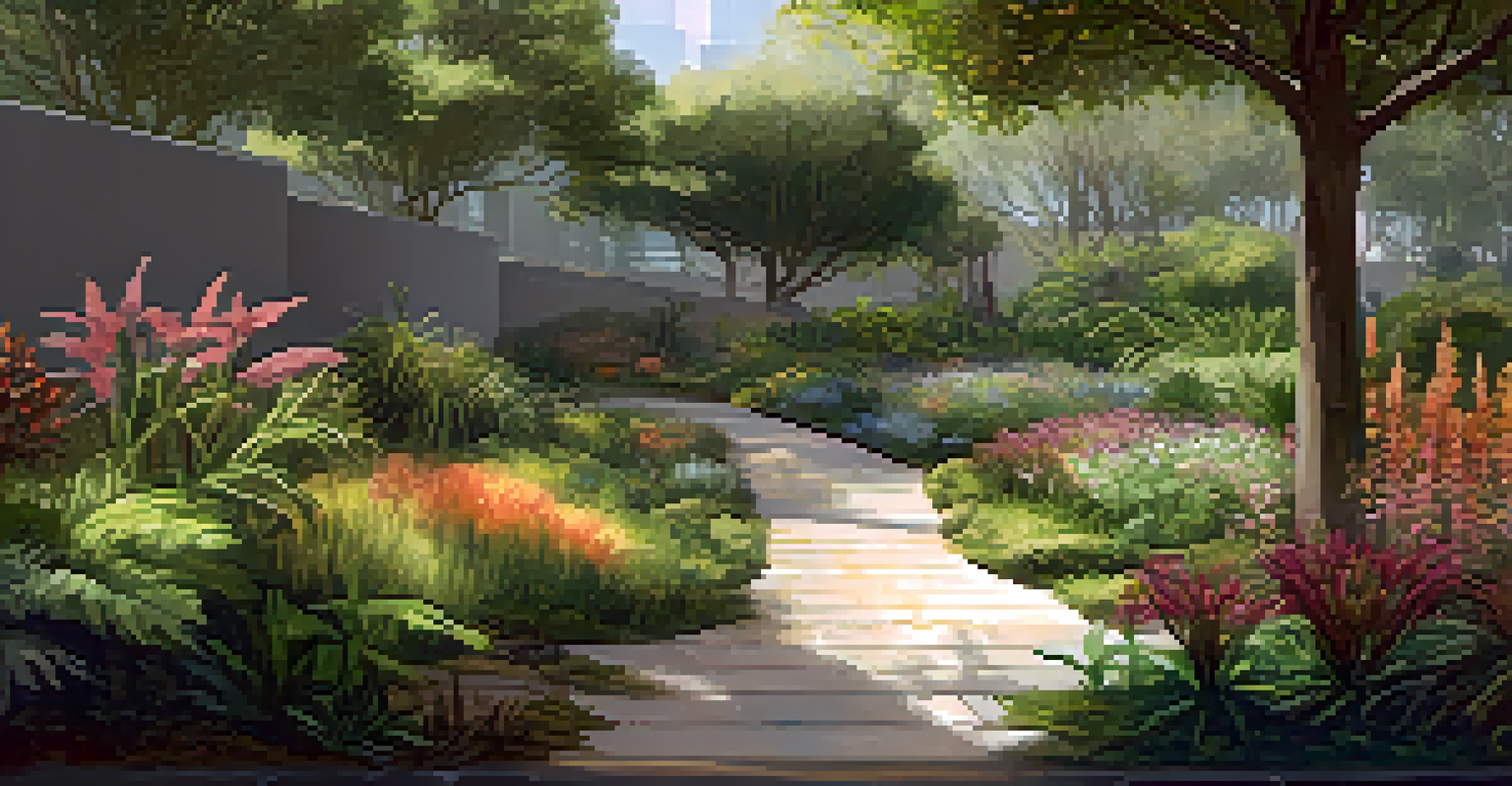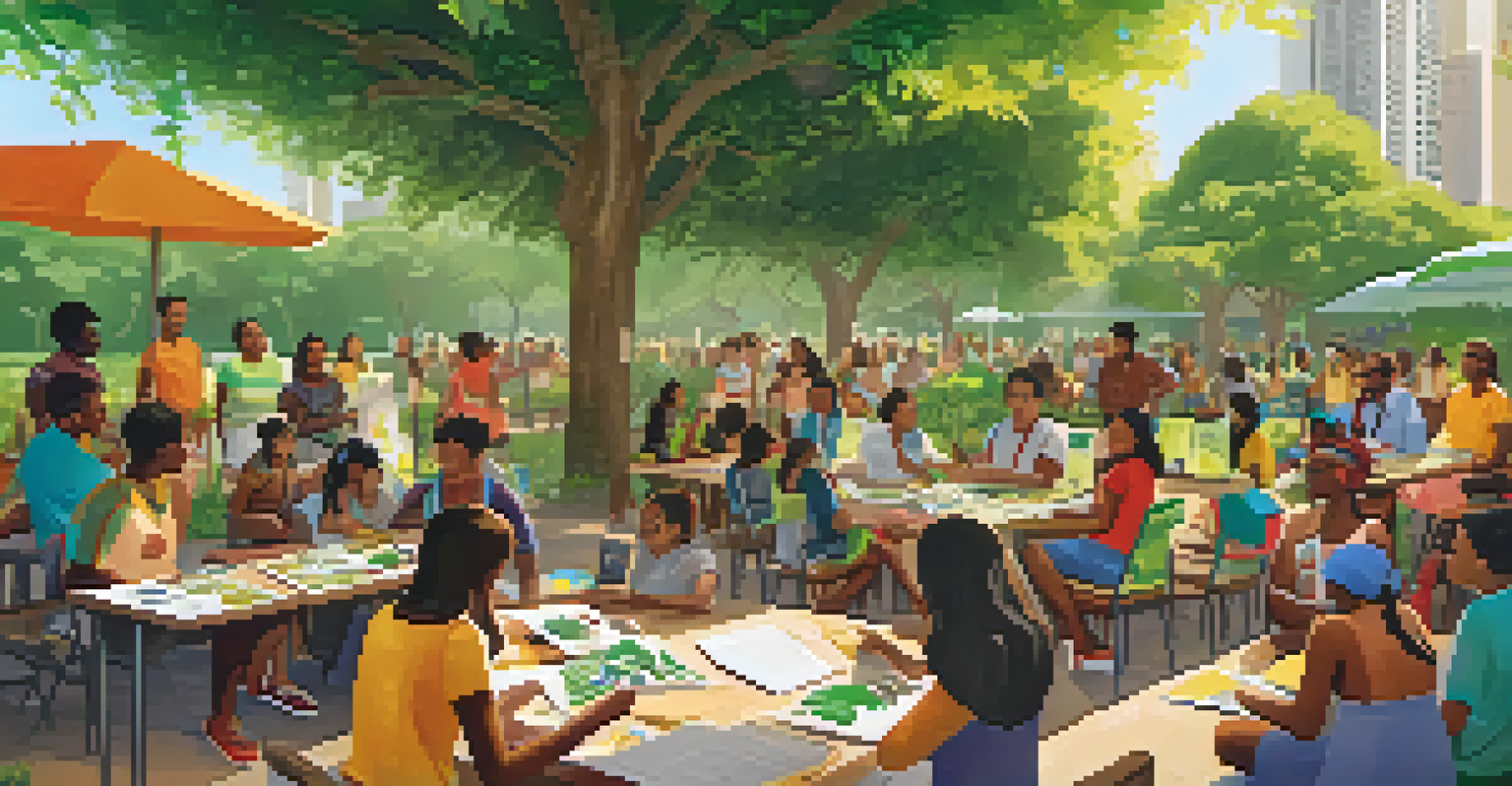Sustainable Practices in Brazilian Urban Parks

The Importance of Urban Parks in Brazil
Urban parks play a crucial role in Brazilian cities by providing green spaces that improve air quality and enhance urban biodiversity. These parks serve as vital recreational areas for communities, offering a respite from the hustle and bustle of city life. With Brazil's rapid urbanization, the need for these green havens has never been more pressing.
Parks are essential to the health and well-being of our communities, providing green spaces that foster connection and growth.
In cities like São Paulo and Rio de Janeiro, parks not only offer aesthetic beauty but also contribute to mental well-being. Studies show that spending time in nature can reduce stress and promote physical activity, making parks essential for public health. By integrating green spaces into urban planning, cities can create healthier environments for their residents.
Moreover, urban parks can help mitigate the effects of climate change. They act as natural carbon sinks, reducing greenhouse gas emissions while providing habitats for various species. As such, the push for sustainable practices in these parks is not just beneficial but necessary for a balanced urban ecosystem.
Implementing Sustainable Landscaping Practices
Sustainable landscaping is a cornerstone of eco-friendly urban parks. This approach includes using native plants that require less water and maintenance, which is especially relevant in Brazil’s diverse climates. Native plants not only thrive in local conditions but also support local wildlife, creating a harmonious ecosystem.

For instance, parks like Parque da Luz in São Paulo have embraced these practices by replacing non-native species with local flora. This shift not only conserves water but also enhances the park's biodiversity, making it a hotspot for local bird and insect species. The result is a vibrant, self-sustaining environment that benefits both nature and park visitors.
Urban Parks Enhance City Life
Urban parks in Brazil provide essential green spaces that improve air quality, promote mental well-being, and foster community engagement.
Additionally, sustainable landscaping often incorporates features such as rain gardens and green roofs. These elements help manage stormwater runoff, reduce flooding, and promote soil health. By integrating these practices, urban parks can become models of sustainability, inspiring other cities to follow suit.
Water Conservation Techniques in Park Management
Water conservation is a critical focus in the management of Brazil's urban parks, especially in regions prone to drought. Techniques such as drip irrigation and rainwater harvesting are being implemented to optimize water usage. These methods ensure that green spaces thrive without wasting precious resources.
Nature is not a place to visit. It is home.
For example, the Parque Ibirapuera in São Paulo has adopted a rainwater collection system that supplies water for irrigation. This innovation not only reduces the park's dependency on municipal water sources but also sets a precedent for other parks in the region. By prioritizing water conservation, parks become more resilient against climate-related challenges.
Furthermore, educating the community about water conservation practices is essential. Workshops and informational signage help park visitors understand the importance of these efforts, fostering a sense of stewardship. When communities actively participate in sustainable practices, the impact on the environment becomes even more significant.
Promoting Biodiversity Through Urban Parks
Biodiversity is the backbone of healthy ecosystems, and urban parks in Brazil are becoming champions of this cause. By creating habitats for various species, these parks help to preserve local flora and fauna under threat from urban development. The integration of diverse plant species is a key strategy in promoting biodiversity.
Parks like the Jardim Botânico in Rio de Janeiro serve as living laboratories for conservation efforts. They provide a sanctuary for endangered species while educating the public about the importance of biodiversity. Through guided tours and educational programs, visitors gain a deeper understanding of how urban parks contribute to ecological balance.
Sustainable Practices in Landscaping
Implementing sustainable landscaping with native plants and water conservation techniques helps urban parks thrive while supporting local ecosystems.
Moreover, initiatives like 'Adopt a Park' encourage local communities to get involved in conservation efforts. By fostering a sense of ownership, residents become more invested in protecting their local ecosystems. This community involvement is vital for sustaining biodiversity in urban settings.
Recycling and Waste Management in Urban Parks
Effective waste management is essential for maintaining the sustainability of urban parks. Many parks in Brazil are adopting recycling programs that encourage visitors to dispose of waste properly. By providing clearly marked recycling bins, parks are taking proactive steps to minimize their environmental footprint.
For instance, the Parque Municipal de Belo Horizonte has implemented a comprehensive waste management system that includes composting organic waste. This not only reduces landfill contributions but also creates nutrient-rich compost that can be used to enrich the park’s soil. Such practices highlight the importance of circular economy principles in urban park management.
Additionally, educational campaigns play a vital role in promoting recycling. Informational signs and community events help raise awareness about the importance of reducing waste. By engaging the public, parks can foster a culture of sustainability that extends beyond their boundaries.
Community Engagement and Education in Sustainability
Community engagement is at the heart of successful sustainable practices in urban parks. Brazilian cities are increasingly involving local residents in decision-making processes regarding park management. This collaboration ensures that the needs and desires of the community are met while promoting sustainable practices.
Programs such as volunteer days and educational workshops encourage community members to take part in maintaining their local parks. These initiatives not only cultivate a sense of pride but also empower residents to become advocates for sustainability. When people feel connected to their environment, they are more likely to protect it.
Community Involvement Drives Sustainability
Engaging local communities in park management and educational initiatives fosters a sense of ownership and commitment to conservation efforts.
Moreover, schools often partner with parks for educational programs focused on sustainability. By introducing children to the concepts of conservation and biodiversity early on, cities can cultivate a new generation of environmentally conscious citizens. This holistic approach to education is vital for fostering long-term sustainability in urban spaces.
Innovative Technologies Supporting Sustainability
Technology is playing an increasingly important role in enhancing sustainable practices in urban parks. Innovations such as smart irrigation systems and drone monitoring are helping park managers optimize resource use and monitor ecological health. These technologies provide data-driven insights that inform better decision-making.
For example, some parks are utilizing sensors to track soil moisture levels, ensuring that irrigation is only used when necessary. This not only conserves water but also promotes healthier plant growth. The integration of technology in park management represents a forward-thinking approach to sustainability.

Furthermore, mobile applications are being developed to engage visitors and encourage sustainable behaviors. These apps might provide information on local flora and fauna or suggest eco-friendly activities within the park. By leveraging technology, urban parks can enhance the visitor experience while promoting environmental responsibility.